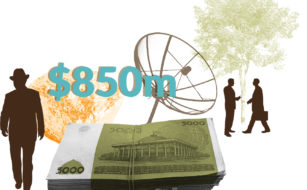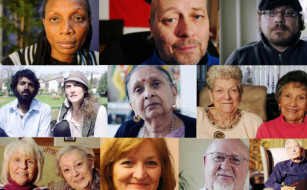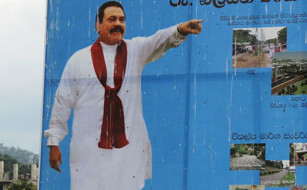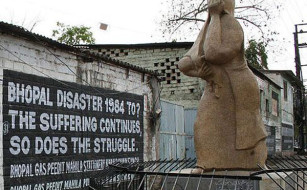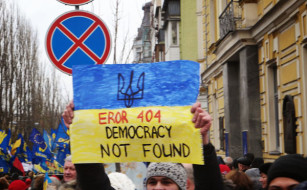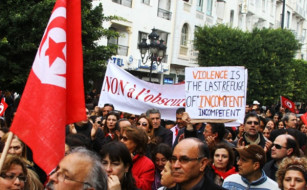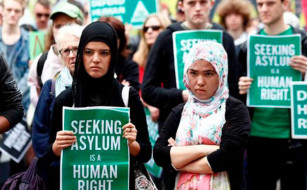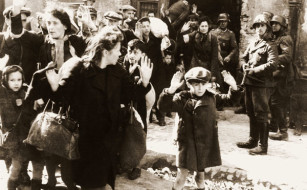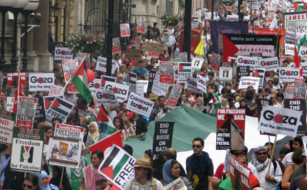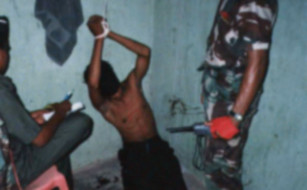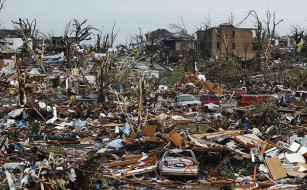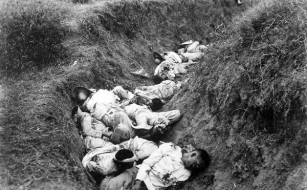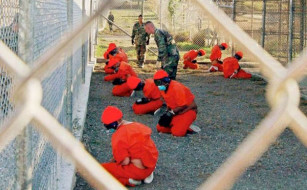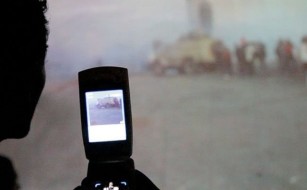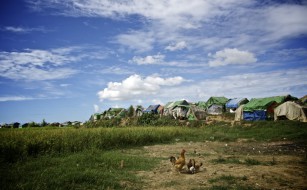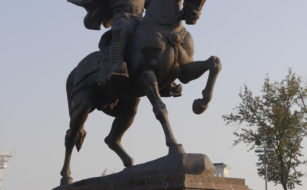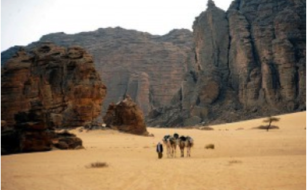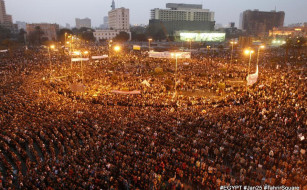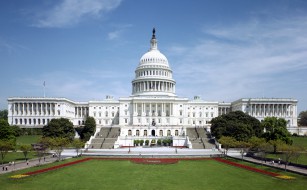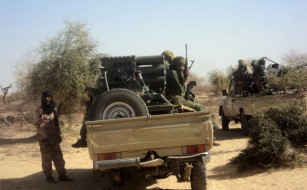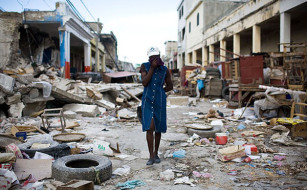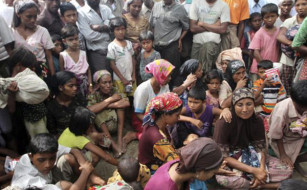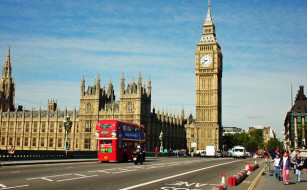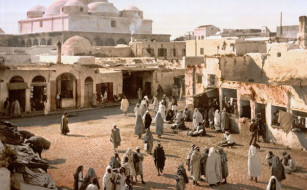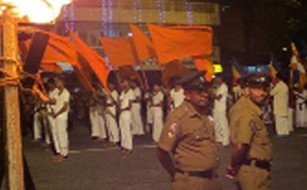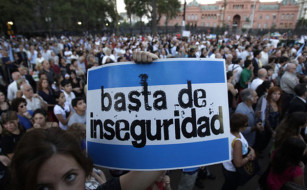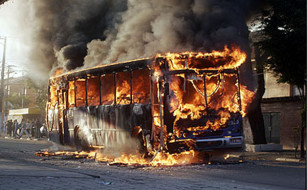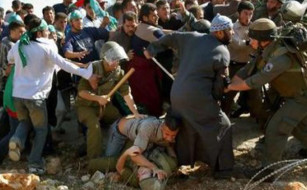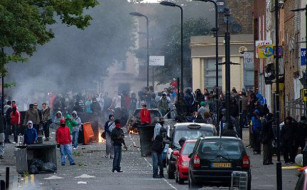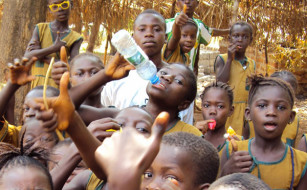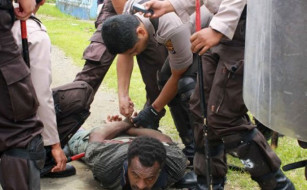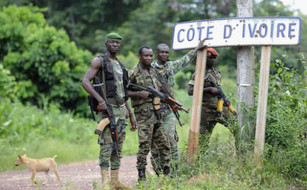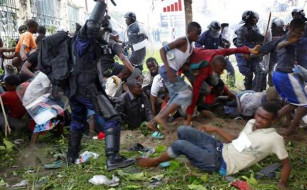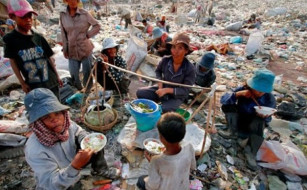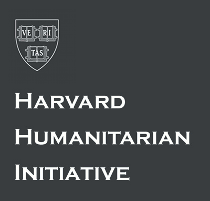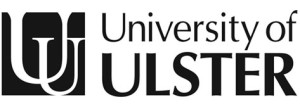Covid-19 and the Gaza Strip / Hend Dabbah
As Covid-19 continues to sweep around the world, we can observe how marginalised populations disproportionately bear the brunt of the virus, exposing controversial and ill-informed policies and practices of governments. The impact in Gaza has been exasperated, as in the case of many populations living under military conflicts or occupation. These populations often suffer from severe poverty and substandard living conditions. This reality can be seen across the Middle East region, and is stark in Palestine.
In the context of Palestinians living in the Gaza Strip (and the West Bank), Israel’s regime of institutionalised oppression, discrimination and racial domination over the Palestinian has come under fresh light during the pandemic. The global experience of temporary mass lockdown and quarantine measures implemented across different regions and countries due to Covid-19 is in several respects a strong reminder of the permanent reality Palestinians have been experiencing under Israel’s military control since June 1967. Palestinians have been hampered in their quest for self-determination, they have been subjected to movement restrictions and they have been denied access to adequate health services.
This article deals with the impact of Israel’s policies on Palestinians in the Gaza Strip during Covid times. The virus shows quite vividly how Israel’s siege on Gaza has over the years led to high levels of fragility and de-development of the health care system in the Gaza Strip (the ‘Strip’) and has denied Gazans the right to the enjoyment of the highest attainable standard of physical and mental health.
Gaza closure and its implications
Following the introduction by Israel of various movement restrictions on the Gaza Strip in 1990s, two million Palestinians have been held under a comprehensive land, air and blockade since June 2007, incarcerating them into one of the most densely populated tracts of land in the world. As part of this closure, Israel has imposed very stringent limitations on the movement of people and goods. Palestinians are prohibited from entering and leaving the area without permit, imports into the Strip are restricted and exports are completely banned. Gaza, as a result, is often referred to by international observers as the world’s largest open-space prison (see also here). This, along with regular military attacks, including attacks on healthcare infrastructure, and years of structural violence that systematically denies Palestinians their basic human rights, has undermined all aspects of life; culminating, therefore, in largely frustrating the development of the economy, the provision of basic infrastructure and improved social services in the Strip. The overall result has been profound levels of, among other things, food insecurity, aid dependency, impoverishment and unemployment.
Since 2012, the United Nations (UN) has repeatedly warned that the Gaza Strip would become unliveable place by 2020 if ‘sustained and effective’ action is not taken to immediately provide and improve basic infrastructure and services. In the absence of such action, according to the UN, there will be no reliable access to clean drinking water or reliable electricity. With regard to the already fragile healthcare and education systems, the UN predicted further, continuous deterioration by 2020. All this makes an increase in already staggering poverty and food insecurity rates more highly probable.
International law and the question of legality
The international community, including various UN bodies and other human rights organisations, has widely considered Israel’s blockade of the Gaza Strip to be illegal, stating that it constitutes clear contravention of international human rights and international humanitarian law and amounts to collective punishment against the civilian population of Gaza.
Article 33 of Fourth Geneva Convention specifically prohibits collective punishment:
‘No protected person may be punished for an offence he or she has not committed. Collective penalties and likewise all measures of intimidation or of terrorism are prohibited.’
In 2013, the UN Secretary-General stated that ‘the blockade and related restrictions target and impose hardship on the civilian population, effectively penalising them for acts they have not committed,’ therefore violating international law and resulting in a form of collective punishment.
Israel’s closure of Gaza is, therefore, prohibited under international law. At the same time, Israel’s policies and practices of institutionalised discrimination and denial vis-à-vis the Strip have continuously deprived its residents of exercising and enjoying a full range of fundamental human rights to which they are entitled. The inability of Palestinians — due to Israel’s closure and related policies — to practice their right to self-determination and to enjoy permanent sovereignty over their natural wealth and resources (see below), lives, education, health, free movement and an adequate standard of living culminates in ‘systematic violation of human rights and suspected international crimes’, according to a blog for the campaign ‘Gaza 2020* — Lift the Closure!’
Gaza closure in Covid-19 times
Covid-19 has shed a glaring light on how the blockade on Gaza, coupled with continuous exposure to violence and other injustices, has inflicted harm on Palestinians in the Strip, making them particularly susceptible to the deadly virus. Israel’s policies and practices towards Gaza’s vulnerable population have over the years driven a healthcare system to the brink of colossal collapse and have undermined this population’s right to health. Already at a point of crisis prior to the pandemic, the health services in the Strip have suffered acute shortages of medicines, medical equipment and expertise. This has forced many with critical need of continuous care to seek treatment elsewhere. However, due to large-scale movement restrictions deployed by Israel, entering and existing the Strip requires a permit which is rarely obtained and always through an onerous, opaque and ‘arbitrary bureaucratic process’.
The right to health, according to the UN Office of High Commissioner for Human Rights and the World Health Organisation (OHCHR and WHO respectively), is an inclusive right. It extends not only to health services, medical equipment and facilities but also to non-medical, social factors referred to as ‘underlying determinants of health’. These determinants include, though are not restricted to, the realisation of basic essential needs such as access to clean drinking water and sanitation, nutritional food, adequate housing and safe and healthy working environment. The provision of these underlying determinants is considered to be core obligations for all State parties of the International Covenant on Economic, Social and Cultural Rights, including Israel.
For Palestinians living in Gaza, however, the ‘structural and political conditions’ they have long been subjected to, are additional dimensions and ‘key determinants’ of the quality of public health, according to Giacaman R, Khatib R, Shabaneh L, et al. In particular, the lack of enabling political environment characterised by the ongoing closure and years of protracted conflict have negatively impacted the ‘underlying determinants of health’.
All of the following are health determinants in the Gaza Strip:
- Chronic exposure to violence. This has led to a large number of casualties over the years. It has also generated a mental health crisis and psychosocial outcomes, particularly affecting children.
- Weak economy. Healthcare performance is profoundly dependent on economic conditions and the health of a given economy. The economy of the Gaza Strip has been in ‘free fall’, according to a WHO report published in 2018. Restrictions on the movement of people and goods, including hindering access to the Israeli labour market have devastated the economy and its capacity to create jobs, leading to a new high level of unemployment which reached about 54% in 2018; the poverty rate was 53% for the same year.
- Food insecurity. In the Gaza Strip, the levels of food insecurity are considerably high with 69% of households are regarded as food-insecure.
- The longstanding water and sanitation crisis. This has profound implications for public health. Palestinians in Gaza suffer from severe lack of potable water given that over 96% of Gaza’s freshwater (Gaza’s aquifer) is not suitable for consumption. This, combined with poor wastewater management, particularly imperils the health of residents. The large amount of untreated wastewater finding its way into the Mediterranean Sea increases the potential for a regional public health issues, including for Gaza’s neighbours, Israel and Egypt. This crisis has been aggravated by the rapid deterioration in Gaza’s infrastructure and Israel’s severe restrictions on the import of equipment and supplies. Residents of the Strip face serious health hazards, which are made worse by poor hygiene and enhance the potential for disease transmission through the consumption of contaminated water.
- The chronic power shortage. This has seriously impacted the availability of essential services, particularly health, water and sanitation and has jeopardised Gaza’s economy for over a decade. Gazans received an average of only four hours (see also here) of electricity supply per day in 2018. A significant increase in the supply of power has been seen since October 2018 however following Qatar’s aid of financing the purchase of fuel for Gaza’s power plant. This aid has enabled the provision of an average of 15 hours of electricity supply in a 24-hour window to residents of the Strip.
- Adequate housing and good housing conditions. As widely known, these can save lives, prevent disease and improve quality of life. However, in November 2018, 14,000 people lacked suitable shelter in the Gaza Strip. This increases the potential of contracting diseases.
- Population density. Gaza has a high population density of 5,453 persons per square kilometre. High levels of population density increase the rate of the transmission and spread of infectious diseases, making Gaza’s more susceptible to epidemics.
The right to health in the Gaza Strip is therefore seriously undermined by Israel’s persistent, politically-motivated policies. This has expedited the de-development of Gaza’s healthcare system. These policies constitute a mass violation of human rights, including the right to life and the right to health.
In the era of a new global pandemic, the convergence of long-lived social and political injustices and the structural violence the Palestinians of Gaza have been enduring for over 53 years of military occupation, including13 years of blockade, in effect has not only highlighted Israel’s oppressive and discriminatory regime towards Gaza; it has also defined health patterns and generated vulnerabilities that impair Gaza’s ability to effectively prevent, detect and respond to any communicable disease outbreak, let alone one in the gravity of COVID-19. These vulnerabilities — which have become rather conspicuous during the pandemic — have rendered it unavoidable to characterise what has been termed as ‘preventable biosocial injustices’ as being entrenched in Israel’s institutionalised oppression and its undermining of the Palestinians’ struggle for their fundamental human rights.
Israel has obligations vis-à-vis the Gaza Strip and its residents which fall under international humanitarian law and international human rights law. Article 56 of the Fourth Geneva Convention, shows how Israel, as an occupying power, must maintain healthcare services, public health and hygiene. In particular, Israel must adopt and apply all preventative means available to control the spread of contagious diseases and pandemics. Moreover, Articles 11(1) and 12(1) of the International Covenant on Economics and Cultural Rights provide that Israel must respect, protect and fulfil the rights of Palestinians to the highest attainable standard of living, including adequate food, clothing, housing and water and sanitation.
Per the most recent statistics at time of writing (26 July 2020), there have been 76 confirmed coronavirus cases in the Gaza Strip; out of which 70 patients have recovered and one patient died. These figures are, arguably, rather notably high for a territory such as the Gaza Strip, which is rather isolated, densely-populated and exists under an iron-fist blockade.
Appreciating the devastating consequences of the pandemic (should it, as is inevitable, take hold in the Gaza Strip) in light of the harsh reality prevailing therein, several human rights and legal organisations have, through a joint statement, called on Israel to fulfil its moral and legal obligations towards the Palestinians, especially those living in the Strip and to put an end to the closure in order to enable Gaza’s healthcare system to function properly during these challenging times. Others (Giacaman R, Khatib R, Shabaneh L, et al) had emphasised, even before the outbreak, that greater recognition should be given to the political and structural settings of the Palestinians in general, and the Palestinians of Gaza in particular, as the root causes for ‘ill health’ and that these lie at the heart of any plans for improving Palestinians’ health. These commentators have called for the preservation of basic human rights of Palestinians, in accordance with the Geneva Convention, including the right to justice and health as a means for better health conditions and enhanced quality of life. This, combined with lifting restrictions on movement of persons and goods and improved security, according to these commentators, would lead to more sustainable results and economic growth as opposed to relying on humanitarian and medical assistance.
Human rights implications
While the world is consumed by the spread of Covid-19, Palestinians in the Gaza Strip are burdened with unique and added challenges, which undermines their already limited capacity to contain the pandemic. Other than desperately combating the virus in an attempt to limit its spread, Gazans have been subjected to air, sea and land actions by Israel.
From the air, there has been a renewal of aerial herbicide spraying along the eastern parts of the Gaza Strip perimeter fence in Gaza City District and Middle Gaza district. These activities were last reported (at time of writing) on Sunday, 5 April 2020, according to the Legal Centre for Arab Minorities in Israel, Adalah. In a joint effort with Gisha, Legal Center for Freedom of Movement and Al Mezan Center for Human Rights, Adalah sent a letter to the Israeli authorities with an urgent demand to cease spraying herbicides in the eastern Gaza Strip ‘due to health risks to Gaza residents and damage to crops, which may potentially jeopardize food security in Gaza at a time when it’s most critical’. This practice of spraying harmful chemicals, in Adalah’s view, have further undermined food security and health during the pandemic, constituting a major threat to the right to life. Given the restrictions on movement during such critical times that have led to a drop in labour force, spraying has exacerbated access to food, hence potentially impacting the population’s health.
By sea, the Israeli navy’s regular assaults on Palestinian fishermen, as part of restriction measures deployed to enforce maritime closure on the Gaza Strip, have increased by 70% in April 2020 compared to January-March 2020. Navy forces have been routinely using live ammunition, resulting in injuries, killing and harassment of the fishermen, and damage to, and confiscation of, fishermen’s boats and property. Such violent practices have been reported in May (see also here) and June 2020. Further to the denial of Palestinian sovereignty over natural resources, these practices have thwarted the livelihoods of the fishing community in the Gaza Strip, particularly against the backdrop of economic uncertainty and the heightened concern for food security and well-being at the time of a global pandemic.
On land, at least eight incursions of Israeli army bulldozers have been reported near the perimeter fence in the Gaza Strip in April 2020 according to the Office for the Coordination of Humanitarian Affairs (OCHA) of the UN, which has resulted in land levelling. This activity was rather significant in scale and importance especially when seen in light of the military ‘buffer zone’ established by Israel. According to reports by the UN Office of the High Commissioner for Human Rights (see also here), the zone, widely known as an access restricted area (ARA), extends over approximately 35% of Gaza’s arable land and 85% of its maritime zone and severely impacts, thus, the Strip’s agricultural and fishing sectors which, in turn, bears consequences for the wider (struggling) domestic economy.
These air, sea and land actions have stark and extensive implications for violations of fundamental human rights of Palestinians living in the Gaza Strip. Together with the institutionalised discrimination and oppression, negligence, denial and structural violence Gaza has been subjected to, these actions fit the definition given to the term ‘state crime’ as coined by Green and Ward ‘State organizational deviance involving the violations of human rights.’ According to this definition, a state commits a crime when, in organizational terms, it ‘deviates’ from acceptable laws, norms or ‘shared moral beliefs’ resulting thus in violation of human rights. The actions as well as omissions by Israel vis-à-vis Gaza and its Palestinian population clearly infringe international law. This renders them, very arguably, illegitimate practices. The compatibility of these practices with commonly held moral beliefs is also in doubt. The deviance is therefore very much inherent in these practices particularly when viewed under the overarching Israeli siege on Gaza. With the violation committed in terms of human rights by Israel, the link between ‘deviance’ and ‘consequence’ is clearly well established in the case of Gaza.


